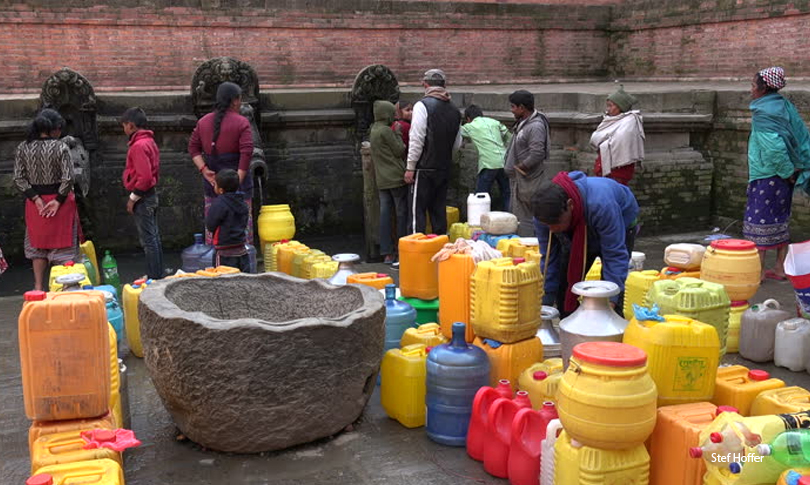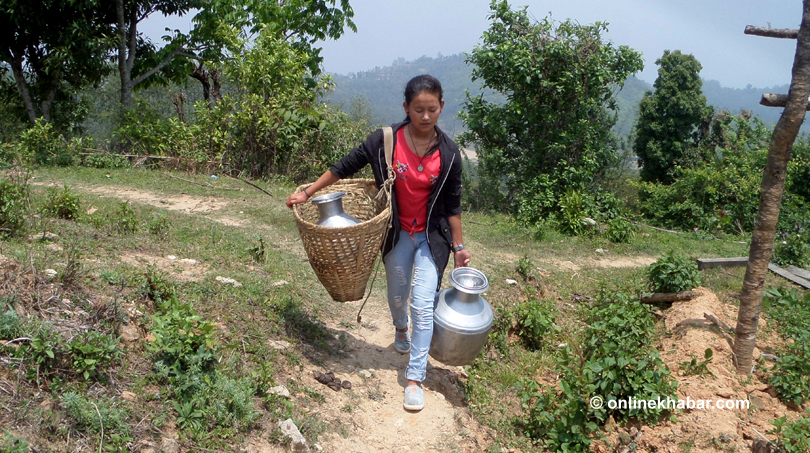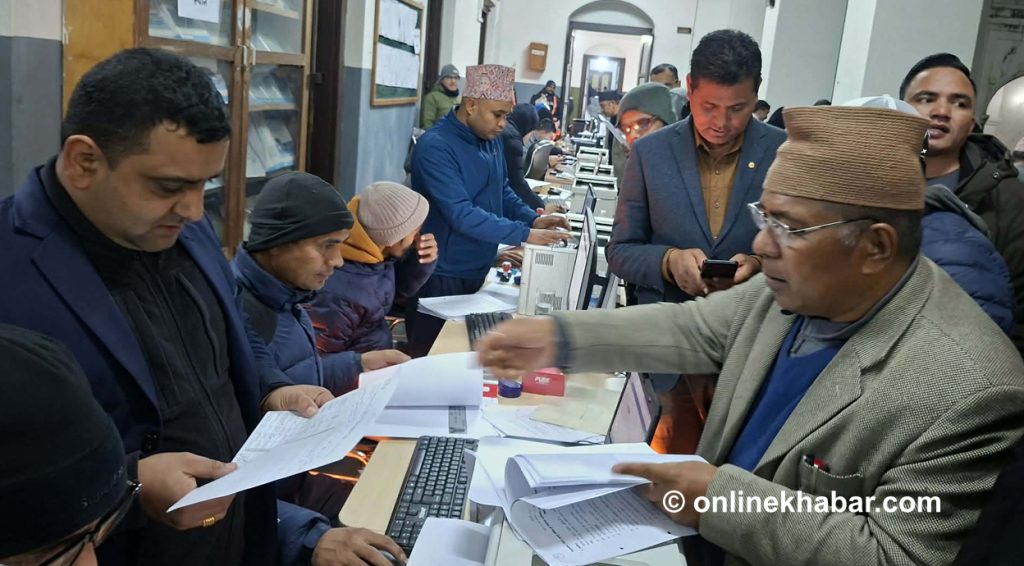
With the government decision to terminate its contract with the Italian builder, CMC, to complete the tunnel works of much ambitious Melamchi Water Supply Project, Kathmanduites’ dream of receiving as much water as the city needs has been deferred again.
While such frequent interruptions have dashed hopes of the common people, they have left researchers and stakeholders confused about the future of the city. Unable to explore other options to solve the perpetual crisis, researchers have begun seeking ‘out of the box’ solutions; they have now pinned their hopes on the newly introduced federal governing system to quench the thirst of the city.
Is federalism really capable of bringing a paradigm shift in water resource management of Kathmandu Valley?
Major recharge zone under attack
Three academicians of Tribhuvan University recently researched on the water distribution system of the capital and concluded that the Melamchi project can satisfy Kathmanduites’ needs till 2021 only if the current population growth rate remains steady.

The research identified the north-eastern part of the valley as the major water recharge zone of Kathmandu, but the region is under immense pressure from haphazard urbanisation. Consequently, people living on the north-eastern part of town, which includes places such as Jorpati, Gokarna, Mulpani, Kapan, Budhanilakantha, Tokha and Nepaltar among others, are likely to face a more severe crisis.
Basanta Raj Adhikari, the lead researcher, however, warns that the problem is not restricted to the northeastern side. “The crisis is prevalent in the entire Kathmandu Valley, but it is the northeastern side that is bearing the brunt the most.”
The researcher explains that the migration pattern of Kathmandu Valley is largely horizontal: human settlements are moving from the centre to the outskirts. Because water resources are more abundant on the northeastern outskirts, people coming to Kathmandu from other districts and residents of downtown Kathmandu also prefer this area for residency.
“But, the pattern of water flow is quite opposite; it flows from north to south,” he describes, “Hence, horizontal urbanisation results in increased water scarcity.”
“Though it is not immediately possible to take a large number of people out of Kathmandu, our hope is that people will stop migrating to Kathmandu before the crisis turns deeper, due to the new federal structure,” Adhikari says, “We cannot decipher what happens after that if our hope fails.”
‘But not a magic wand’
Experts, however, are uncertain about the impact of federal setup on water resource management of the valley, given the poor and unscientific distribution of natural resources.

Balananda Paudel, former bureaucrat who led the tough task of delineating boundaries of 753 local units while setting up the federal structure around two years ago, asserts that people’s belief that federalism can solve everything is wrong.
“Federalism is all about the change in the role of the state in the governing process. It is about the distribution of state power among various levels,” Paudel explains, “But, it cannot change the unwritten contract forged between the state and its citizens.”
He says common people’s perception that Kathmandu is the best place to live in, because it has all the facilities they need is a legacy that the capital city has possessed for decades. “It took many years to construct infrastructures of the city. Doing so in other places will also take an equal amount of time.”
Therefore, Paudel suspects the validity of the hypothesis that the introduction of federalism can immediately change the migration pattern and encourage people to live in cities other than Kathmandu.
Pitamber Sharma, a noted development and planning expert, however, has a different opinion. He believes the federal system, in principle, is capable of addressing the water crisis among other issues related to the distribution of resources.
“Federalism is the decentralisation of governing system,” he defines, “With the decentralisation of government, everything else is decentralised.”
Erroneous execution
But, Nepal’s problem, according to Sharma, is the ill implementation of the ideal system.
“Centralisation is dominant in our exercise of federalism.” He argues that the current system of federalism could not be different from the administrative decentralisation introduced in the Panchayat era.
“In such systems, other systems are decentralised, but not the governing system. It cannot work,” Sharma says, “The change is possible in principle, but the implementation so far is hopeless.”
Recently nominated for the chairperson of National Natural Resources and Fiscal Commission, Paudel partially agrees with Sharma that the current practice of federalism has restricted the possibility of decentralisation of resources.

“My wish was that all seven provincial capitals would be established outside already developed cities. If we had done that, we could have planned the cities in a completely new way,” he laments the lost possibility, “It could have brought a big shift in the entire demographic pattern and infrastructure development works in the country.”
Sharma says the foundation of bad practice lies in the constitution. “The constitution has restricted the rights of provincial and local governments. Most of the rights and responsibilities delegated to them have been listed as common jurisdictions of the three tiers.”
He blames the political leadership for failing to guide the bureaucracy towards a better way of implementing the new system. The political parties, which led revolutionary movements for the change, could not change the mindset of staff, and it aggravated the problem, according to him.
Hoping against hope
Though frustrated with the current working style of provincial and federal political leadership and bureaucrats, Sharma says the correction is still possible if the stakeholders realise intrinsic values of federalism.
He says Nepal Communist Party, which leads governments at the federal level and in six out of seven provinces with a comfortable majority everywhere, has an unprecedented opportunity to set up examples about how a well implemented federal country would look like.
“The responsibility lies in the federal government primarily,” he says, “But, the provincial governments should also demand for more rights and effectively exercise the rights already delegated to them.”
Sharma claims some glimmers of hope are already in sight. “Many people have already returned to Surkhet from Nepalgunj after Karnali provincial government was established and Surkhet named the provincial capital.”
Adhikari, on the other hand, is now confused if his hope on federalism would work. The research team had once thought about extending suggestions for relocating some settlements of the valley, but shied away after realising that it would be politicised by interest groups, he says.
Besides the effective implementation of federalism, proper management of existing water resources would be crucial to help the valley cope with the problem, according to him.




















